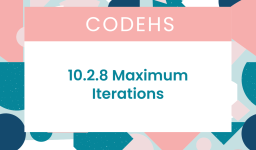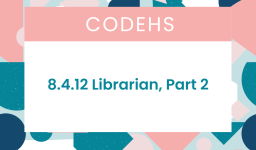The most common answer is:
Code Segment One – Data Type – Numbers
num_result = 24 + 24
print(num_result)
Code Segment Two – Data Type – Strings
Change both numbers to strings and run code
Change only one number to a string and run code. What happens?
string_result = str(24) + str(24)
print(string_result)Let’s discuss and run the code segments as described, including the experiments with changing numbers to strings.
Code Segment One – Data Type – Numbers
This segment adds two numbers and prints the result.
num_result = 24 + 24
print(num_result)
Output: 48
In this case, the operation is an addition of two integers, resulting in 48.
Code Segment Two – Data Type – Strings
Change both numbers to strings and run code.
This segment treats the numbers as strings and concatenates them.
string_result = str(24) + str(24)
print(string_result)
Output: 2424
Here, the str() function converts the numbers to strings, and the + operator concatenates these strings, resulting in "2424".
Change only one number to a string and run code
Let’s see what happens when only one of the numbers is converted to a string:
string_result_mixed = str(24) + 24
print(string_result_mixed)
This code will not run as intended and will result in a TypeError because Python does not allow concatenation of strings and integers directly. You would need to convert the integer to a string explicitly to avoid this error:
string_result_mixed = str(24) + str(24) # Correct approach
print(string_result_mixed)
Or, if the intention is to add one number to another where one is already a string, you must convert the second number to a string as well, as shown above. The output would be the same as when both numbers are strings, "2424".
In summary, adding two integers results in numerical addition, while concatenating strings (even if they represent numbers) results in a combined string. Attempting to combine a string and a number directly will cause an error, highlighting the importance of being mindful of data types in Python.




Leave a comment